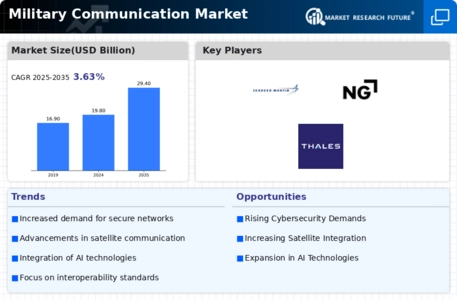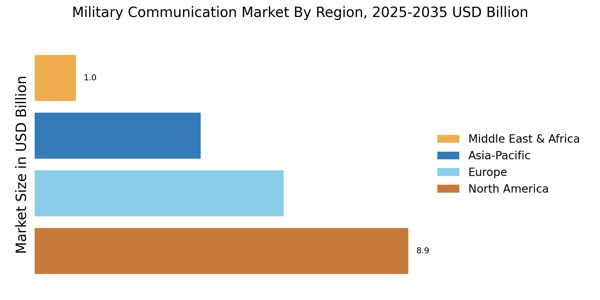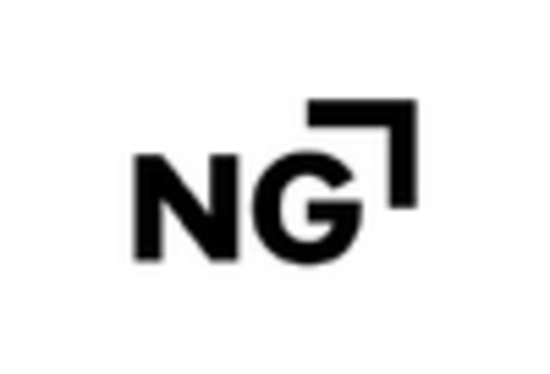Rising Defense Budgets
The increasing defense budgets across various nations appears to be a primary driver for the Military Communication Market. Countries are allocating substantial resources to enhance their military capabilities, which includes upgrading communication systems. For instance, the defense budget of the United States is projected to reach approximately 750 billion USD in 2025, reflecting a commitment to modernizing military infrastructure. This trend is mirrored in other nations, where governments are investing in advanced communication technologies to ensure operational efficiency and effectiveness. As military forces seek to maintain a strategic edge, the demand for sophisticated communication solutions is likely to rise, thereby propelling the Military Communication Market forward.
Increased Focus on Joint Operations
The increased focus on joint operations among allied forces is influencing the Military Communication Market. As military alliances strengthen, the need for interoperable communication systems becomes essential. Joint operations require seamless communication between different branches of the military and allied nations, necessitating the development of standardized communication protocols. This trend is evident in multinational exercises and operations, where effective communication is vital for mission success. The demand for systems that can facilitate interoperability is expected to drive innovation within the Military Communication Market, as defense contractors strive to create solutions that meet the diverse needs of collaborative military efforts.
Emergence of Artificial Intelligence
The emergence of artificial intelligence (AI) in military applications is poised to reshape the Military Communication Market. AI technologies are being integrated into communication systems to enhance decision-making processes and improve operational efficiency. For example, AI can analyze vast amounts of data in real-time, providing military personnel with actionable insights during critical missions. The AI in military communication market is projected to grow significantly, with estimates suggesting a value of over 5 billion USD by 2025. This growth indicates a shift towards more intelligent communication solutions that can adapt to dynamic battlefield conditions. As AI continues to evolve, its impact on the Military Communication Market is likely to be profound, driving advancements in technology and operational capabilities.
Growing Need for Secure Communication
The escalating need for secure communication channels within military operations is a significant driver for the Military Communication Market. As geopolitical tensions rise, the importance of safeguarding sensitive information becomes paramount. Military organizations are increasingly adopting encrypted communication systems to protect against cyber threats and espionage. Reports indicate that The Military Communication Market is expected to grow at a compound annual growth rate of over 10% through 2025. This trend underscores the necessity for robust communication solutions that can withstand potential breaches, thereby enhancing the overall security posture of military operations. Consequently, the demand for secure communication technologies is anticipated to bolster the Military Communication Market.
Advancements in Satellite Communication
Advancements in satellite communication technology are transforming the Military Communication Market. The integration of satellite systems enables military forces to maintain reliable communication across vast distances, which is crucial for operational success. The market for satellite communication in defense is projected to reach approximately 30 billion USD by 2025, driven by the need for real-time data transmission and enhanced situational awareness. These advancements facilitate seamless communication in remote and challenging environments, allowing military personnel to coordinate effectively. As nations continue to invest in satellite infrastructure, the Military Communication Market is likely to experience substantial growth, reflecting the critical role of satellite technology in modern warfare.


















Leave a Comment